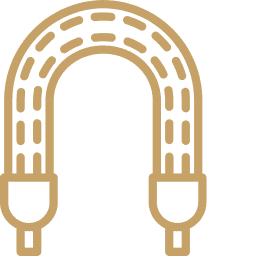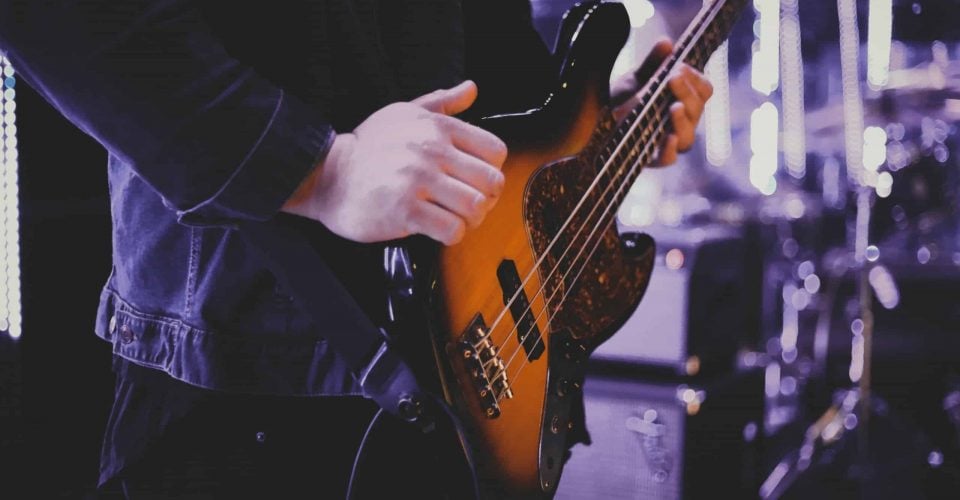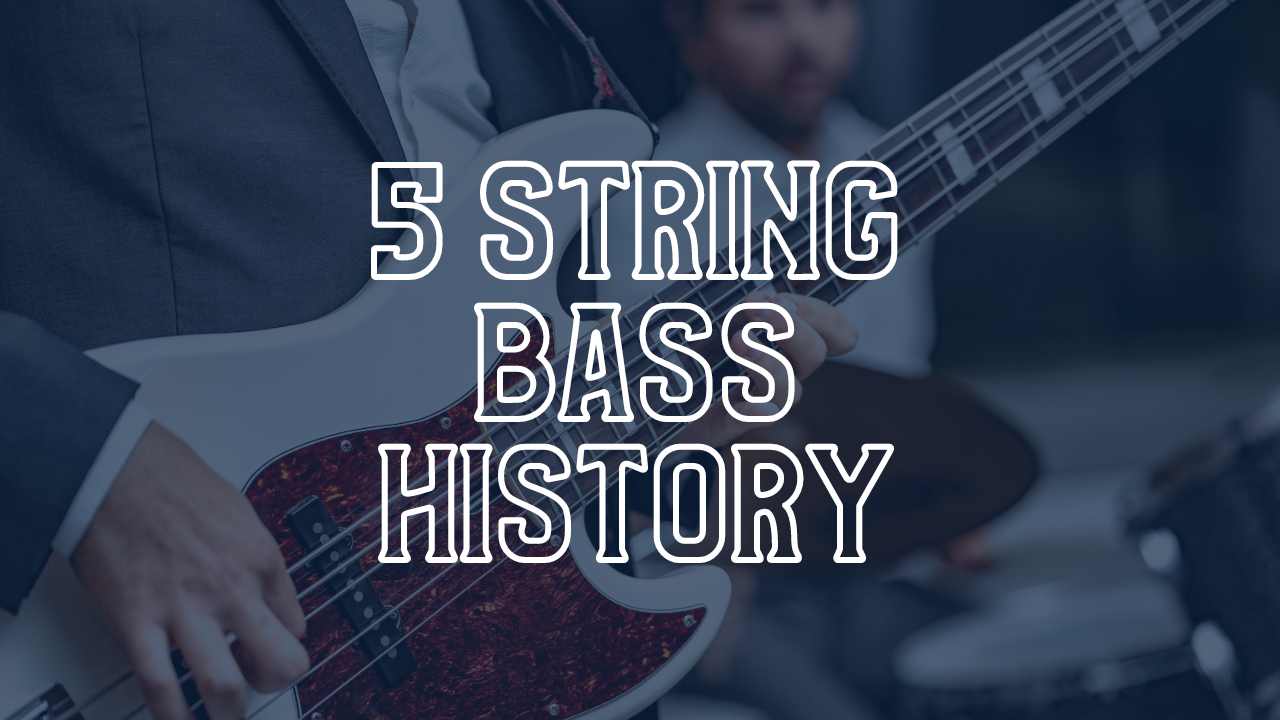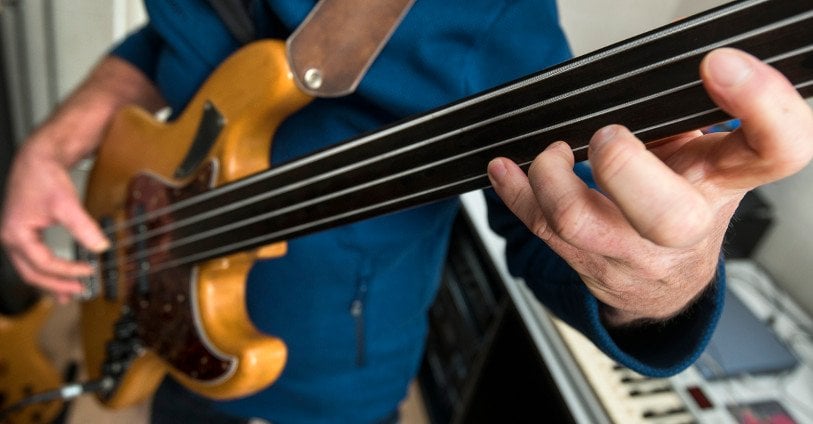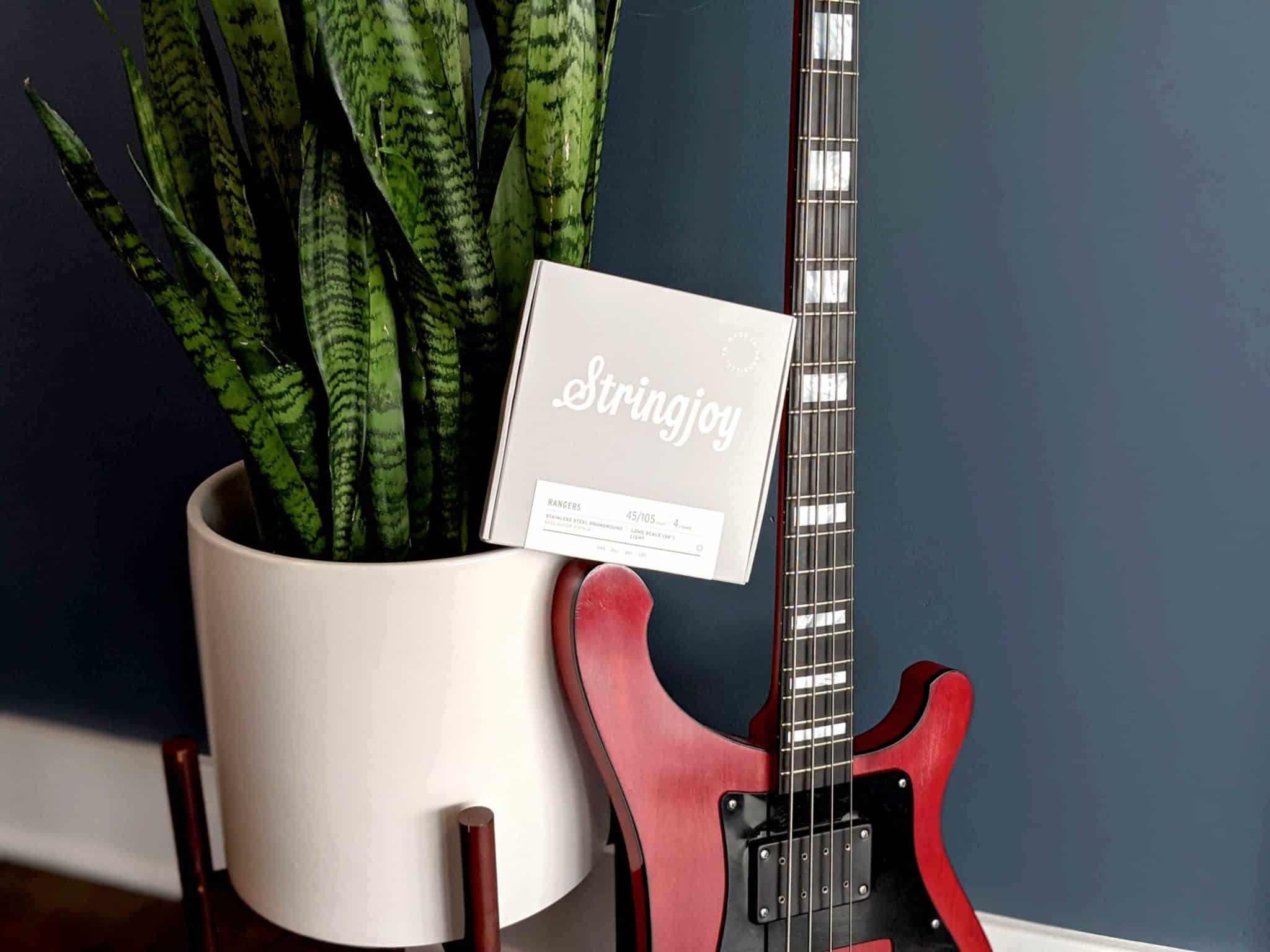From early jazz to modern metal, slap bass has had an impact on music that cannot be overlooked.
You’ve heard it in funk, you’ve heard it in disco, you may have even heard it in country, but have you ever heard of where it came from?
Like most musical techniques, it’s a playing style with a murky history and unclear origins. But, we’ll take a look at the players who helped bring the skill to the mainstream through their improvised innovations and daring readiness to break from bass traditions.
What Is Slap Bass?
The Sound and Styles
Since it’s double bass beginnings, slap bass has split off into several different distinct techniques. There are, however, a couple elements that join them under the same umbrella.
First, rather than bowing the strings or simply plucking them with a pick or the fingertips, slapping involves a percussive strike that sends the string against the fingerboard. This gives the style its trademark sound—a sharp, direct SNAP that adds punctuation to each note. To pull this off, the player might slap the strings nearer to or even directly above the end of the fretboard, but it’s not uncommon to see the slapping hand situated close to the bridge.
Second, a slap is often accompanied by a pop. This means that the thumb generally is used on the lower strings, delivering a downward snare-like spank—a SLAP, if you will—while one or two fingers work to pull up and release the higher strings so that they impact—or POP—the fretboard.
Over the years, players have developed variations of these slap and pop techniques, but the underlying principle has remained the same—that is, the strings are struck with enough force to send them into the fretboard, resulting in a distinctly percussive attack.
Where Did it Come From?
New Jazz in New Orleans
Before the mid-20th century appearance of Fender’s Precision bass, the deepest notes of ensembles were typically delivered either by the tuba or by the large and low contrabass.
This standup bass was usually played with a bow, even in early jazz and swing music. Though some musical passages called for a plucked pizzicato technique, the bow was, by and large, the most common means of tickling out bass lines.
Then, sometime in the early 1900s, a fascinating new technique started to spread throughout New Orleans. Abandoning their bows and adding vigor to the traditional pizzicato, double bassists began really going to town on their string attacks, and slap bass popped into existence. (Get it?)
We can’t say for sure who was the first to “slappa da bass,” but the technique is generally credited to William Manuel “Bill” Johnson. Johnson, born in 1872, founded the first extensively touring New Orleans jazz band, The Original Creole Orchestra.
He claimed to have started slap bass when his bow broke during a performance in Louisiana, and then to have taught bassists the technique during his wide-reaching tours.
During the spread of jazz in the 1910s and 1920s, many bassists began using the slap style of playing. This may be a case of multiple discovery, with each player finding the technique of his own accord, as many bassists claimed to have been the first to show this new skill on the scene.
Whatever the case, once the slapping began, it never stopped. It carried on through the jazz days, into swing, and really took hold of the rockabilly movement thanks to Bill Black, the famed bassist for Elvis Presley.
To this day, slap technique on the double bass can be found in genres ranging from modern jazz to Caribbean marimba to bluegrass and on to psychobilly and more.
The Thump and Pluck of Larry Graham
Just like Bill Johnson’s broken bow brought him to slap the stand up’s strings, so did a broken organ bring about the first known slaps on an electric bass.
When the electric bass arrived on the scene in the 1950s, players took to it with the same overhand plucking technique that was the most common style for the contrabass at the time.
Then, in the 1960s, a young Larry Graham ran into the need to add some thicker groove to his jams. Graham was raised with rhythm, tap dancing and playing piano from the age of 5.
When he turned 15, he started playing guitar in a trio with his mother, Dell Graham, and drummer, Rueben Kerr. The group played the club scene of the Bay Area throughout the early 60s.
In order to fill out the bottom end of their sound, Larry took to playing the bass pedals on the organ of the Redwood City Escort Club, all the while playing guitar and singing backup. Kerr eventually left the group, reducing it to a mother/son duo.
Dell and Larry continued as a team, with mom on the keys and son working overtime on the organ pedals and guitar. This worked well until the organ broke, at which point the younger Graham rented a Teisco-made St. George electric bass to keep their bottom end bumping.
Finding that he needed to replace the pump they’d lost when their drummer split, Larry devised a way of thumping the lower strings and vigorously plucking the higher to give their sound a rhythmic boost.
As the story goes, a great fan of the Dell Graham Duo was so taken by Larry’s technique that she persistently called KSOL DJ Sly Stone to tell him he needed to come check out the extraordinary young bassist. Eventually, Stone relented and stopped in to watch the duo. He was equally impressed and soon after invited Larry Graham to join his new band, Sly and the Family Stone, in 1968.
The group burst into popularity in the late 60s and early 70s, with their hit “Dance to the Music” climbing the charts and their album Stand! gaining platinum status after its 1969 release. With this rise in popularity came a flood of producers and songwriters looking to ride a similar wave to success, and as bassists sought to emulate the distinctive thump they heard in these hits, Graham’s percussive slap bass technique hit the bigtime.
There’s no great thematic time to bring this up in this article, but Larry Graham is the uncle of the rapper Drake—so yes, Drake’s uncle basically invented modern slap bass. Small world.
The 70’s Slap Bass Boom
Larry Graham’s original thump and pluck style began a gradual evolution beginning in the early 1970s. Whereas Graham initially actually pinched the higher strings to produce the distinctive pop sound, he would eventually develop this technique into the under-string finger hook we’re more familiar with today.
Funk musicians began taking note of this playing style as Sly took the music scene by storm, and by the mid-70s, nearly every funk bassist was slapping and popping through the loud and proud bass lines of the time.
Among the most notable of these first slap-loving converts is the famed Bootsy Collins, best known for his work with Parliament-Funkadelic. You can hear Bootsy slapping as early as 1972 in Funkadelic’s America Eats Its Young.
Taking shape at this time was the genre of jazz fusion, shooting off from the innovations of Miles Davis and Larry Coryell. Leading up this genre was pianist Chick Corea, who formed the band Return to Forever with Stanley Clarke in 1971.
Clarke, who had been playing bass since the age of 12, soon jumped on the slap train and has since been one of the most prominent players of the technique. His 1974 self-titled album is essentially 40 minutes of slap and pop solo mastery.
The well-known group Santana was also experimenting with jazz fusion during the early 70s. On their album Caravanserai, recorded in 1972, we find perhaps the earliest known use of the double-thumb slap bass technique, pioneered by Doug Rauch.
Now, of course, disco was on the rise in the 1970s, and along with this came slap bass riffs of a new caliber. Exemplifying this was the ultra-groovy Bernard Edwards of the band Chic. In addition to the typical slap style, Edwards used his thumb and pointer finger together to strike the strings in a fashion that produced a similarly percussive pound.
Louis Johnson was another prominent bassist of this era, recording with superstars such as Aretha Franklin, Herb Alpert, Billy Preston, and Michael Jackson. His use of the technique in a variety of genres, carrying out past the 70s through the 90s, helped bring slap bass from jazz and funk to the wider-reaching scene of pop, soul, and R&B.
Slap Shakes the 80s
With the rise of pop music in the 1980s came the advent of amazing slap bass virtuosos like Mark King, Marcus Miller, and T. M. Stevens. Miller and Stevens, both prolific session musicians, showcased their slap talents in a huge array of recordings throughout the 80s and 90s.
Mark King, a founding member of the British pop band Level 42, further popularized the technique through his lightning-fast combinations of slapping, popping, and muting, collectively called “machine-gun” style.
In stark contrast to the sultry pop webbing its way through the decade, harder fusions of funk started to appear on the scene with bands like Primus and Red Hot Chili Peppers. Blending the groovy syncopated beats of the 70s with aggressive overdriven guitars, funk rock and funk metal struck the music scene with grit and power.
Two bassists stand out here, Les Claypool and the ever-popular Flea. While Claypool utilized a variety of experimental techniques in his performances, Red Hot Chili Peppers’ Flea drew his inspiration largely from Bootsy Collins and maintained a more standard funk style through RHCP’s early days. Despite their differences, both bassists left a profound mark on music and showed just how far a player can take slap bass.
In 1986, Tony Levin unveiled a totally new way of slapping the bass on the track “Big Time” from Peter Gabriel’s So album. Known as “funk fingers,” this technique does away with the thumb altogether and instead uses a pair of sawn-off drumsticks attached to the first and second fingers. The sticks, tipped with rubber, are used to smack the strings, producing a sound very similar to the original slap and pop technique.
The last years of the 80s saw the formation of the eclectic group Béla Fleck and the Flecktones. Arising from what would have been a one-time PBS performance, Béla Fleck and the Flecktones combined the banjo virtuosity of Fleck with the likewise superb bass skills of Victor Wooten in a strange mixture of bluegrass and jazz.
Wooten, who has played bass since the age of 2, built upon Doug Rauch’s double-thumb technique to create a slap style that is without rival. Making extensive use of natural harmonics and rapid attacks, Wooten has made a name for himself as one of the greatest bassists of all time, winning Bass Player magazine’s Bass Player of the Year award three times.
90s Metal Gets the Funk
The 1990s saw both the rise and fall of funk metal, beginning with bands like the 80s pioneers Living Colour, Primus, and Red Hot Chili Peppers.
Funk metal was overall a poorly described genre, with basically any punk or rock band whose bassist used the slap technique being lumped into the category.
However the individual bands described themselves, there came about a trend of heavy-style bands using funky, slap-filled bass lines to accentuate their sound and set themselves apart from the growing number of heavier bands.
One of the longer-lasting of these groups is Suicidal Tendencies, which in 1990 was joined by Robert Trujillo, the current bassist of Metallica. Trujillo’s aggressive slap technique lent a new flow to the thrash band’s sound and brought them a newer and wider-ranging audience, eager to hear the unusual blend of thrash metal and funk bass.
Other bands of the decade falling under the funk metal whose bassists commonly use a slap style are Faith No More, Mr. Bungle, Incubus, and 311.
In the early and mid-90s, nu metal hit the scene, adding slap bass riffs to a mashup of hip-hop vocals, heavy metal guitar licks, and thrash-inspired drum beats, represented by such bands as Korn and Alien Ant Farm.
The Oughts and Modern Slap
I think it’s safe to say that there haven’t been many revolutionary changes to the slap and bass technique first laid down by the 70’s funk masters since Victor Wooten perfected the double-thumb technique.
The last two decades have seen a continuance of all the styles characterized by these slap-and-pop bass parts, both in new bands and in the persistent founders.
Many of the first slap masters are still at it—Bootsy Collins, Stanley Clarke, Marcus Miller, and even 73-year-old Larry Graham—are all still funking it up. The second wave bassists like Victor Wooten, Flea, and Les Claypool continue to pump out slap jams.
Younger up and comers include popular Youtube stars like Davide Biale (aka Davie504) and Rob Scallon who continue to inspire and create with the slap style set down so long ago by the teenaged Larry Graham looking to add some depth to his mom-accompanied duos.
Conclusion
So what’s the future of slap bass? It’s really anyone’s guess. Electric bass technique has come an amazingly long way from its beginnings as a horizontal adaptation of the contrabass and may continue to go much farther.
What I think is certain is that the slap and pop style will never fade from popularity so long as stringed instruments exist. Its percussive groove is simply too good to give up, and, to everyone’s benefit, it’s a technique that’s here to stay.
